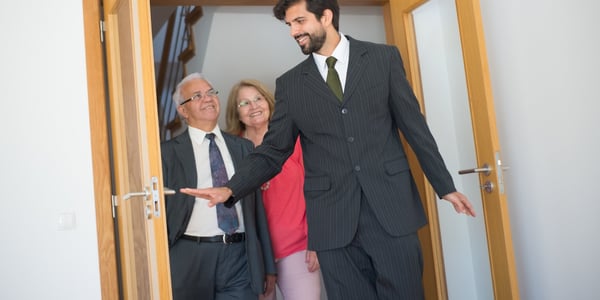With the onset of the COVID-19 pandemic in the U.S., significant attention has been given to the...
Staying at Home May Be Riskier Than You Think
A fall, not eating right, missing medications. Independent seniors and their families know of the risks lurking around the house, especially if an older adult lives alone. As these and other problems start to occur with higher frequency, moving to an assisted living arrangement becomes more urgent. Yet, in the era of COVID-19, families have been more reluctant to consider this alternative.
Pandemic Shock and Response
The impact of the pandemic on older adults shouts out from the media every day. People over 65 have consistently accounted for around 80% of weekly COVID-19 deaths since mid-March. Yet senior living facilities have significantly stepped up their infection control game. For example, facilities implementing best practices have kept non-essential personnel out of their buildings while allowing only those staff required by a resident's care plan.
Also, campuses have established social distancing practices for activities and dining. New dining protocols have spawned increased in-room meals. Technology has been actively leveraged to provide video meetings between residents and their loved ones.
The downside of restrictions and lockdowns has been increased feelings of isolation. Facilities have creatively combatted this with virtual activities to help residents feel engaged and energized while keeping them physically safe. Many operators have ramped up communications with residents and their families to report the latest information and educate them about risks and safety procedures.
These improvements notwithstanding, older adults and their families may still feel afraid to move to a new home at present. However, the risks of illness need to be weighed against the risks and other drawbacks of staying at home.
Home Sweet Home?
Falls, which result in three million emergency room visits annually, stand out as a significant risk for seniors living independently. One out of every five of these falls causes broken bones or a head injury. Yet, of these millions of falls, only about half are reported to doctors. This poses an additional risk because, after a first-time fall, the chance of falling again doubles. In many cases, a fall signals the beginning of a downward health spiral that could have been avoided.
Senior facilities are, by law, constructed with fall prevention in mind. Handrails, grab bars, and non-slip floors are some of the built-in safety measures. Also, best practices help further reduce the risk. Residents who are prone to falls, cognitively impaired, or have diabetes are monitored closely. In general, female residents are more carefully watched because they tend to be more likely to fall than men. Many facilities integrate anti-fall exercises into their physical fitness activities. Some studies have shown that these exercises reduce falls by up to 30%.
Medication Mess
With an increase in age comes an increase in medications for most adults. Ironically, however, increased age also often brings less ability to manage medications. This includes taking them on time in the right doses, keeping them organized, and getting refills before medications run out. One study showed that nearly 40% of older adults made a medication error in the prior 12 months. Considering that serious health issues could result from errors, consistency and precision in taking medication is a must.
Studies have further shown that the higher the involvement of healthcare professionals, the fewer medication errors occur. Assisted living facilities follow strict protocols regarding medication to ensure the right doses are administered at the right time.
Leanest Cuisine
Seniors living alone are often challenged when it comes to proper nutrition. At the very least, cooking at home for one is uninspiring. According to the Mayo Clinic, however, there are several other possible reasons:
- Normal age-related changes to taste, smell, and appetite.
- Illness
- Difficulty in chewing or swallowing, poor dental health, or limited ability to handle eating utensils
- Dementia
- Medications that affect appetite or the ability to absorb nutrients
- Restricted diets
- Limited income
- Reduced social contact
- Limited access to food
- Depression caused by grief, loneliness, failing health, lack of mobility, and other factors
- Alcoholism
Senior living facilities offer varied and nutritious menus prepared by professionals. Special diets can be accommodated, and assistance with meals is available. Community interaction becomes highly valued as residents often look forward to meals as the social highlight of the day.
Hacking It at Home
%20(1).jpg?width=300&name=woman-having-a-video-call-4031818%20(1)%20(1).jpg) There are alternatives to moving to a senior living facility.
There are alternatives to moving to a senior living facility.
Home healthcare services provide most of the services needed for older adults. Virtually all the aspects of a senior living facility can be delivered in the home by these companies. The one-on-one attention from an in-home healthcare professional exceeds what a senior living facility can provide. However, this comes at a cost. This type of care typically costs two to three times more than a residential facility. Also, the risk of infection may be higher with a professional who serves multiple clients per day.
Click here to learn more about whether in-home care is right for you!
Learn more about senior living options on our Housing Resources page.
Parenting Your Parents
Another option could be to welcome an aging parent into your home. This is a considerable commitment depending on the health and financial status of the elder. As a caregiver, you may have other responsibilities like child-rearing and a job. Available physical space in your home is a prime consideration as well.
If the stars align, it could be a wonderful time to be together as a family. On the other hand, it could be more than either you or your parent bargained for. Thoughtful research and a frank conversation with your parent about the potential situation are prerequisites in charting a path toward this option.
The prospect of moving to a senior living facility during a pandemic seems overwhelming. Yet an honest assessment of all the risks of moving versus staying put may reveal that moving to a new home could be the best choice.


.jpg?width=300&name=thermometer-1539191_1920%20(1).jpg)



